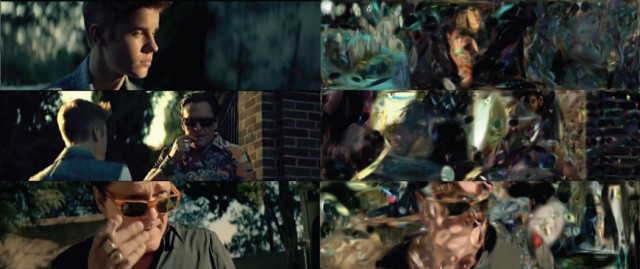Visual Smash Up from Parag K Mital on Vimeo.
What happens when you distort a video with a video? It’s what artist and coder Parag K Mital calls a “visual smash up,” which he says “takes existing content and mashes it up to create new content.”
Huh? Well, have a look above for an example with a live video feed – or below, combining Simpsons and Family Guy in unholy animated sitcom matrimony. But here, Parag explains what he’s doing to CDM:
The idea is like concatenative synthesis, but for video. So you have a database of some images/videos, and you use only this content to recreate any other target content. You can use it for painterly rendering, hallucinating (seriously), or even re-create styles reminiscent of analytic cubism, futurism, pointilism, or the abstract expressionists. My favorite bit is the keyboard…
http://pkmital.com/home/projects/visual-smash-up/
Earlier versions took other videos as sources, like the aforementioned cartoons:
Simpsons vs. Family Guy from Parag K Mital on Vimeo.
This is a video resynthesis which first begins by learning a large database of objects by segmenting each frame of the intro to Family Guy and storing these into a large database. The resynthesis (shown on the right) of the intro to The Simpsons (shown on the left) is done by matching similar objects in this video to the ones in the database, creating a mosaicing only using material from Family Guy.
Create your own resynthesis [iTunes App Store]
Made with openFrameworks and OpenCV.
Or, earlier, the subject was YouTube itself, as he tells CDM:
There is also the YouTube Smash Up project, which takes the top 10 videos on YouTube and resynthesizes the top video using the remaining 9 videos. The aim is to end up in the top 10 and resynthesize itself. Though given how crazy it looks and sounds, that would never happen.
pkmital.com/home/projects/youtube-smash-up/
I’m not sure that this is any less effective at keeping Carly Rae Jepsen from becoming a one-hit wonder than her new album. (Oh, burn! Thanks, folks, you’ve been a great audience.)
What’s great about this project is the way in which it alters reality – with the aid of video input.
The process is most interesting when you experience it, as the first video I mentioned shows someone putting goggles on and “entering” that hallucinated world. You wear these goggles and you enter a world that looks a lot like yours, but then not quite right, as well. The system will treat similar objects as the same, whereas you know how to disassociate them and say, that doesn’t look right! In the video you see the hand looks like the eye to the system, or the different letters look the same.
Okay, no driving automobiles, folks.
